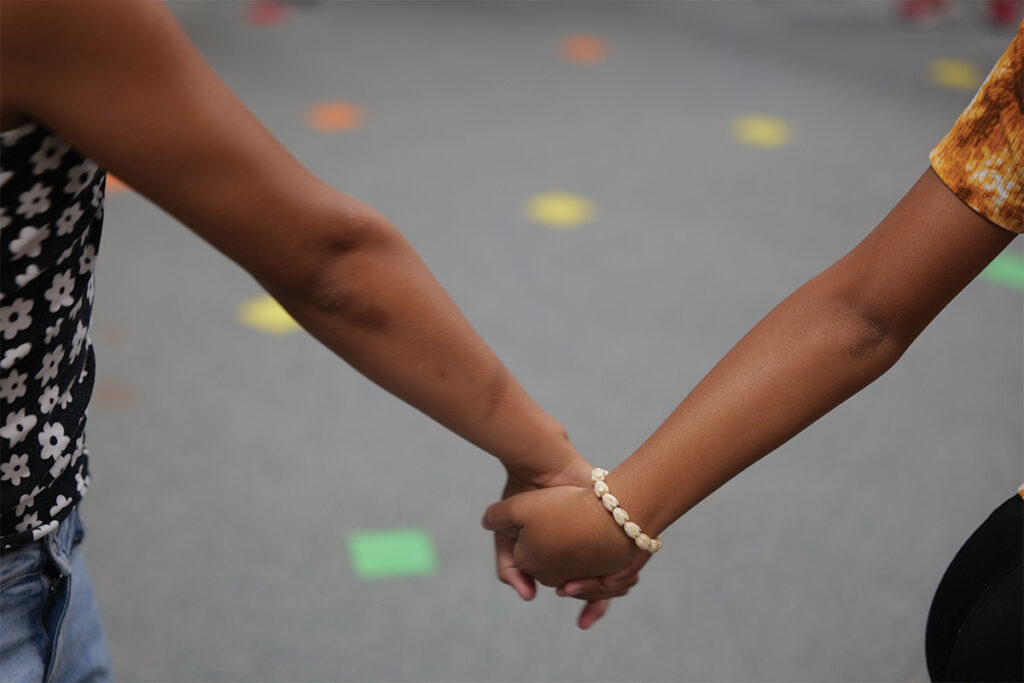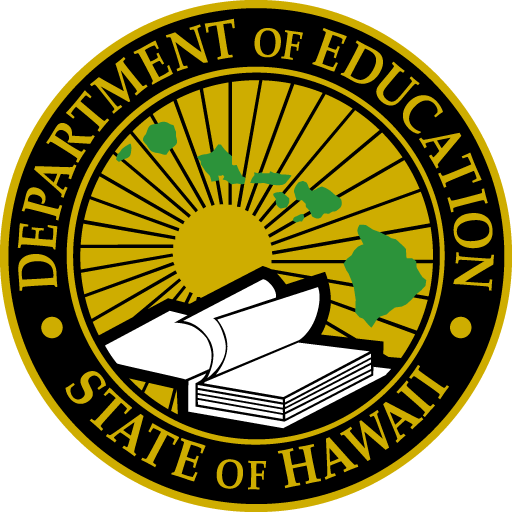Our Hawaiʻi public schools believe every student deserves a safe, respectful learning environment—both in school and online. hoʻomāʻewaʻewa, in any form, undermines the well-being and success of students. That’s why we are committed to empowering students, families and communities with tools and resources to prevent and address bullying. From proactive prevention programs to easy-to-use reporting tools like the E ʻōlelo i kēia manawa HIDOE app, hana pū mākou me ko mākou mau kaiaulu e hāpai i ka moʻomeheu o ka mahalo, kuleana a me ke aloha. Hiki iā mākou ke hōʻoia i ke kākoʻo ʻia a me ka palekana o kēlā me kēia haumāna, no laila hiki iā lākou ke holomua ma ke kula a me ka naʻau.

What is hoʻomāʻewaʻewa?
hoʻomāʻewaʻewa is a serious issue that affects students of all ages and backgrounds. While there are many forms of bullying, we’ll be focusing on two primary categories: bullying a cyberbullying. Understanding these two types is important so we can all work together to create a safer and more respectful school environment.
“Bullying”—kekahi hana i kakauia, waha, kii, a kino paha e hoeha, hoopilikia, hoohilahila, a hooweliweli paha i ka haumana, me na mea me na kulana papa i paleia, ua lawa ka ko'iko'i, hoomau, a lauwili paha e hooulu ai i ka hoonaauao hooweliweli, hooweliweli, a hana ino paha.
“Cyberbullying”—electronically transmitted acts, including but not limited to those transmitted through the Internet, cell phone, or other wireless hand-held device initiated by one student toward another student or employee of the department that hurts, harms, humiliates, or intimidates the student or employee; and is sufficiently severe, persistent or pervasive, that it creates an intimidating, threatening, or abusive educational environment. Cyberbullying can occur:
- Ma ka pā kula, a i ʻole nā wahi ʻē aʻe o ke keʻena, ma ke kaʻa ʻana o ke keʻena, a i ʻole i ka wā o kahi hana i kākoʻo ʻia e ke keʻena a i ʻole kekahi hanana ma ka ʻāina a i waho o ke kula;
- Ma o ka ʻōnaehana ʻikepili ʻoihana me ka ʻole o ke kamaʻilio ʻae ʻia e ke keʻena; a i ʻole
- Ma o kahi pūnaewele lolouila ma waho o ka pā kula, inā pili ka hana i ke ʻano hoʻonaʻauao.
Additionally, cyberbullying may also be based on a person’s protected class, including but not limited to, a person’s race, color, religion, sex, sexual orientation, gender identity, gender expression, age, national origin, ancestry, disability, physical appearance and characteristics, and socio-economic status.
ReporT bullying with our App
HIDOE has an app that allows students to report bullying incidents. Our E ʻōlelo i kēia manawa HIDOE Reporting App offers elementary, middle and high school students a way to report bullying incidents—digitally and anonymously, if they choose—that happen on campus, on HIDOE transportation, or at HIDOE-sponsored events.
- E nānā i nā wikiō ma lalo nei no ka hōʻike ʻana i kēlā me kēia ʻanuʻu o ka waiho ʻana i kahi ʻōlelo aʻoaʻo me ka hoʻohana ʻana i ka app.
- E ʻōlelo i kēia manawa HIDOE Reporting App Flyer (PDF)
Pehea e hoʻouna ai i kahi kōkua
Nā Haumāna Kiʻekiʻe ma ka Papa 7-12
Nā Haumāna Haʻahaʻa ma ka Papa 4-6
managing bullying
hoʻomāʻewaʻewa is a Community Issue
hoʻomāʻewaʻewa belongs to all of us. School staff can address incidents and support students at school, but they cannot stop bullying—in all its forms, and in all the places it occurs—on their own. Families, students, and communities have a role to play to adopt and promote a culture of respect, responsibility and resiliency.
Paipai mākou i nā ʻohana e kamaʻilio me kā lākou mau keiki e pili ana i ka mahalo a me ke aloha i nā poʻe ʻē aʻe, me ka poʻe ʻokoʻa. Ma ko mākou mau kula, hoʻoulu mākou i kēia mau ʻano ma ke ʻano he ʻāpana Nā Hopena Aʻo, social-emotional learning, and other efforts. While bullying can happen to anyone, students may also be targeted because of race, socio-economic status, sexual orientation, gender identity, learning disabilities and other qualities; a violation of nā kānāwai kīvila.
Community-wide strategies can help identify and support children who are bullied, redirect the behavior of children who bully, and change the attitudes of adults and youth who tolerate bullying behaviors in peer groups, schools, families and communities.
Any child who is bullied or who witnesses a bullying incident is encouraged to tell a trusted adult or report it using the Speak Now HIDOE app. If an incident happens on our school campuses, on HIDOE transportation, or during a HIDOE-sponsored event, appropriate school personnel will investigate.
Our Response to hoʻomāʻewaʻewa
- Kāohi: All schools are invested in building a positive school culture and climate to encourage all students to be respectful and empathetic. To address bullying behaviors schools may be implementing one or more of the following:
- ʻO nā ʻano hana maikaʻi a puni ke kula e aʻo ana i nā haumāna e lilo i mau haumāna mahalo, kuleana a me ke aloha.
- Anti-Bullying Programs: Communities are unique, and schools have different approaches based on their community’s needs. Some schools have students leading their anti-bullying efforts.
- Nā Hui Kaiāulu: Nui nā kula e hoʻoulu i nā pilina me nā keʻena kaiāulu, nā mea hoʻolako olakino a maikaʻi, nā mākaʻi a me nā hui mākaʻi kaiāulu, nā kākā'ōlelo kānāwai, nā loea moʻomeheu a me nā mea ʻē aʻe e hoʻonui i nā kākoʻo.
- pane: Ke hiki mai kekahi hanana, e noiʻi ke poʻo kumu a i ʻole kona mea i koho ʻia i:
- E hoʻoholo inā he hewa e like me ka wehewehe ʻana e nā Rula Administrative Hawaiʻi (HAR) Mokuna 19 (PDF) ua hiki mai.
- E hoʻokomo i loko o ka waihona kākoʻo haumāna o ka 'Oihana, kahi e hiki ai i nā kula ke ʻike, nānā a nānā i nā pilikia haumāna i ka manawa.
- Nānā hou: School staff provide supports to victims and bullies to address ongoing conditions that may have contributed to the bullying incident and to help prevent future incidents. These conditions may include issues at home, stress, abuse, and health, social-emotional and behavioral health issues, among others.
Ke kolohe a me ka hoʻopaʻi haumāna
Mokuna 19
Hoʻoponopono nā Rules Administrative Hawaiʻi, Mokuna 19, i nā pilikia e pili ana i ka hana kolohe a nā haumāna, which includes bullying, harassment and cyberbullying. It’s important that students and parents review this information to be aware of what constitutes a Chapter 19 violation, and what the consequences are.
Hoʻoiho i nā lula hoʻomalu o Hawaiʻi, Mokuna 19:
- Paniolo (PDF)
- Tagalog (PDF)
- Thai (PDF)
- Tonga (PDF)
- Vietnamese (PDF)
Chapter 19 Translated Parent Letters
The Department recognizes the need for these important letters to be translated into their native languages for our families to review and download. They include:
- Chapter 19 Parent Letter
- Firearms Parent Letter
- Electronic Smoking Device Parent Letter
- Pelekania
- Hawaiian (forthcoming)
- Cebuano
- Pākē (Maʻalahi)
- Pākē (Kuʻuna)
- Chuukese
Nīnau ʻŌpiopio Pilikino
Ke nānā nei ka Youth Risk Behavior Survey (YRBS) i kahi ākea o nā ʻano e pili ana i ke olakino ma waena o nā haumāna kula kiʻekiʻe, e komo pū ana me nā ʻano hoʻopōmaikaʻi olakino e kōkua i nā ʻeha a me ka hana ʻino ʻole; hoʻohana paka; ka waiʻona a me ka hoʻohana lāʻau ʻē aʻe; nā ʻano moe kolohe e pili ana i ka hāpai ʻana i manaʻo ʻole ʻia a me nā maʻi i lawe ʻia e ka wahine; nā hana ʻai pono ʻole; a me ka hana kino ole. Hoʻohana ʻia ka YRBS i kēlā me kēia makahiki ʻē aʻe i hui pū ʻia me ka hōʻiliʻili ʻikepili a me ka hoʻāʻo ʻana o ka ʻāina Nā kikowaena no ka hoʻopaʻa ʻana a me ka pale ʻana i ka maʻi. The Hawaiʻi YRBS is a joint effort of the Hawaiʻi State Departments of Education (HIDOE), Department of Health (DOH), and the University of Hawaiʻi’s Curriculum Research & Development Group. The Hawaiʻi YRBS data and reports are available on the Hale Waihona ʻIke Ola Hawaiʻi.
